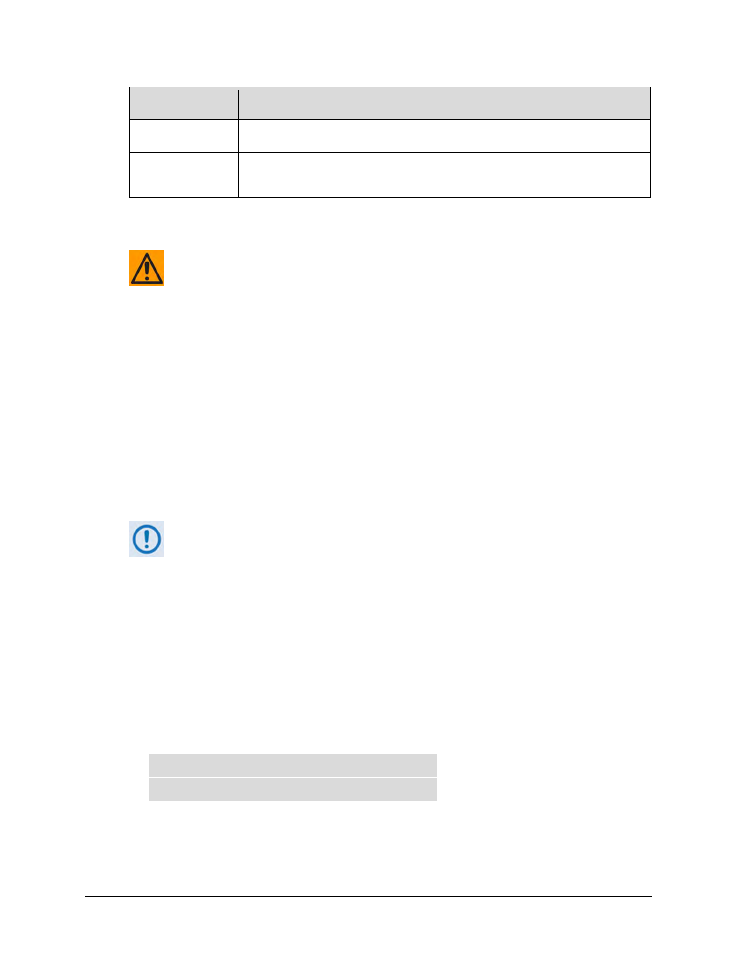2 snmp community strings, 3 snmp traps – Comtech EF Data SPOD PS 1, PS 1.5, and PS 2 C-, X-, or Ku-Band User Manual
Page 61

SPOD C-, X-, or Ku-Band Outdoor Amplifier
MN-SPODPSX
Ethernet-based Remote Product Management
Revision 1
4–3
MIB File/Name (where
‘x’ is revision letter)
Description
FW-0000289x.mib
SPOD-PSx MIB file
MIB file of all OIDs for management of the SPOD functions
FW-0000290x.mib
SPOD-PSx SNMP
Traps MIB file
MIB file for SNMPv1 traps common for SPOD.
4.3.2 SNMP Community Strings
CAUTION – I
n SNMP v1/v2c, the SNMP Community String is sent unencrypted in the
SNMP packets. Caution must be taken by the network administrator to ensure that
SNMP packets travel only over a secure and private network if security is a concern.
The SPOD uses Community Strings as a password scheme that provides authentication before
gaining access to the router agent’s MIBs. They are used to authenticate users and determine
access privileges to the SNMP agent. The SPOD defines three Community Strings for SNMP
access:
• Read Community default = public
• Write Community default = private
• Trap Community default = comtech
Type the SNMP Community String into the user-supplied MIB Browser or Network Node
Management software.
For proper SNMP operation, the SPOD MIB files must be used with the associated
version of the SPOD M&C. Please refer to the SPOD FW Release Notes for
information on the required FW/SW compatibility.
4.3.3 SNMP Traps
The SPOD has the ability to send out SNMP traps both when a fault occurs and when a fault
clears in the unit. The SNMP agent supports both “SNMPv1” and “v2c”. The “Traps” file only
needs to be compiled if “SNMPv1” traps are to be used.
You may configure which style of traps the SPOD sends by using the SPODSNMPTrapVersion OID.
The SPOD supports the following MIB2 v1traps and v2 notifications:
MIB2 SNMPv1 trap: Authentication Failure
5
MIB2 SNMPv2 notifications: Authentication Failure
1.3.6.1.6.3.1.1.5.5
